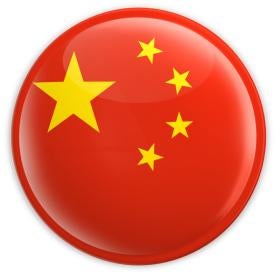Food trade between the U.S. and China is on the rise. According to the most recent statistics, China is the third largest exporter of food and agricultural products to the U.S., behind only Canada and Mexico. And, the U.S. is China’s biggest source of foreign food and agricultural products. Under the current state of trade, the U.S. sends approximately five times the food products to China that China sends to the U.S. But in any event, with the coming into force of China’s newest Food Safety Law on October 1, 2015, food supply chain relationships between the U.S. and China are taking on additional significance.
China’s history with food safety is spotty, and any company that is importing food products from Chinese suppliers should be prepared to take additional precautions. China’s first Food Safety Law was adopted in 2009, following China’s accession to the World Trade Organization in 2004 and its desire to have a bigger role in global food trade. However, while China’s 2009 Food Safety Law bears some similarities to food safety laws in the U.S. (and was designed for that purpose), it lacked the detailed regulations and the robust enforcement required to make it work. The purpose of the 2009 China Food Safety Law was to put an end – or at least make it look like it was putting an end – to the Chinese food scandals that made world markets wary of Chinese food relationships, such as the 2008 tainted infant formula scandal that resulted in the death of 60 Chinese infants and hundreds of thousands of illnesses. Unfortunately, additional tainted food scandals followed the implementation of the 2009 Food Safety Law, making more rigorous measures necessary.
China’s 2015 Food Safety Law, which went into effect October 1, 2015, is an attempt to enact more rigorous measures. And, indeed, the 2015 law does contain additional provisions governing a variety of food safety issues such as the use of food additives, infant formula regulations, and record-keeping requirements designed to add traceability to Chinese food supply chains. However, many critics of the 2009 Food Safety Law noted that its weaknesses were not so much in what the law included or failed to include as a substantive matter, but rather that it lacked the right enforcement devices. Part of the food safety regime in Western countries relies on active consumer groups, industry self-enforcement, and media scrutiny. China does not have these mechanisms.
China’s 2015 Food Safety Law on its face acknowledges these shortcomings, and includes provisions that “encourage” the development of local government enforcement, food industry associations, and media oversight. However, the law is completely silent as to how, as a practical matter, this will be accomplished. Aided by a December 2013 “re-interpretation” of judicial precedent allowing for private citizens to seek compensation for tortious injuries, the 2015 Food Safety Law also allows, for the first time, injured plaintiffs to recover punitive damages from food producers that make or sell adulterated food. China has little precedent for civil lawsuits, media oversight of industry, or citizens’ activist groups, so many in the global food markets are skeptical as to whether the new provisions in the 2015 Food Safety Law will have any meaningful impact. In addition, China’s food industry continues to be extremely disaggregated, and dominated by a large number of very small firms, which presents another major enforcement challenge.
China has been wary of certain U.S. food imports, too. First, although China is developing a China-sized appetite for beef products, the 2003 Mad Cow scare in the U.S. has made China reluctant to allow the import of beef products from the U.S. Currently, China sources most of its beef from Australia, although we expect this to change over time. Second, China has a deep distrust of genetically modified foods (irrationally so, according to many Western food scientists). Therefore, China is closed to a large number of U.S. food producers, which has been the subject of numerous class actions against manufacturers like Syngenta and Monsanto. More on these controversies to come!




 i
i

